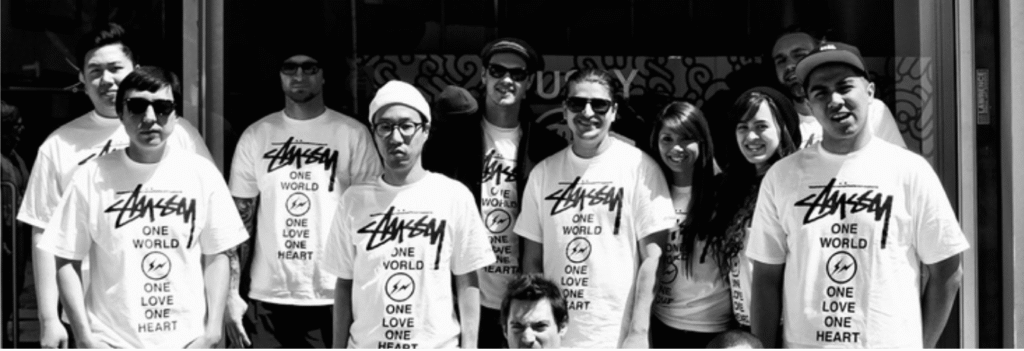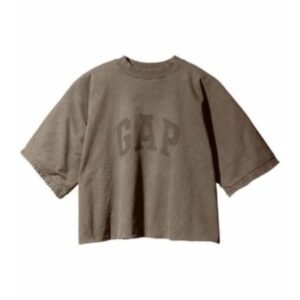
Stussy
There was a time when a logo could define who you were in school. For some, it was a pair of Jordans. For others, a Thrasher tee. But for me? That iconic scrawled signature of Stussy, often stitched across a loose-fitting hoodie or a cap, was everything. It wasn’t just about the clothes — it was about being seen, being part of something bigger, something raw and unpolished that felt more real than anything else. That scrawl carried more attitude than half the album covers in my iPod.
How Stussy Became a Skater Style Icon
In the early days of skatewear culture, most skaters weren’t concerned with what they wore. It was all about comfort, durability, and movement. But this label introduced a shift. Emerging from California in the 1980s, the brand was born out of surf culture but quickly made its way into skate parks across the West Coast. With oversized silhouettes, relaxed fits, and bold logos, Stussy gave skaters a uniform that spoke their language.
The goal of this streetwear was not to appeal to the general public. Instead, it amplified the underground style skaters already had. Its pieces didn’t scream, they swaggered. The brand’s T-shirts and shorts became staples for those who lived on grip tape and concrete. The style matched the rebellious, self-made energy that skating represented. It wasn’t curated. It was claimed. This authenticity is what made Stussy stand out in the world of streetwear evolution, especially among youth who wanted nothing to do with traditional fashion norms.
The Brand’s Deep Ties with 90s Hip-Hop Fashion
By the 1990s, hip-hop was no longer underground — it was a movement. Stussy was riding that wave, right along with it. As rap music began taking over airwaves and influencing global youth culture, the artists behind the music sought style that matched their voice. The brand provided just that.
Loose cuts, graffiti-inspired graphics, and that unmistakable hand-drawn logo fit seamlessly with the mood of the time. Artists and fans alike gravitated toward the brand because it felt like streetwear without the polish — it had grit. Stussy wasn’t just worn in music videos or photo shoots; it was on the streets, in cyphers, at block parties.
The crossover between hip-hop and skateboarding brought a melting pot of influence, and Stussy was one of the few brands embraced by both communities. It didn’t matter if you were bombing a hill or spitting verses in your friend’s garage studio. If you had Stussy on, you were plugged into something real.
Shaping the Roots of Modern Hypewear Brands
Before the term “hypebeast” ever existed, there was Stussy. Long before social media turned fashion drops into mad scrambles and resale prices into stock market charts, the brand quietly pioneered the idea of scarcity and cultural value. The brand understood how exclusivity could elevate not just clothing, but identity.
While today’s hypewear brands often feel driven by algorithms and influencer partnerships, Stussy did it through word of mouth, subculture approval, and consistent design. This lowkey but powerful influence is what today’s streetwear giants are still trying to replicate. Brands like Supreme and Palace may get the headlines, but Stussy laid the foundation.
From its limited drops to collabs with global designers, the brand helped set the tone for what modern streetwear could be. Yet it never abandoned its roots. It continues to drop pieces that echo back to the golden age of skatewear and hip-hop fashion, all while staying present in the now.
Why Stussy Still Matters in Today’s Streetwear Evolution
Fast-forward to now, and fashion has become more fragmented than ever. Trends move at lightning speed, but Stussy has managed to stay relevant without chasing the noise. Part of its staying power comes from its commitment to authenticity. It has never tried to fit neatly into fashion weeks or mainstream style guides.
Instead, it stays true to the DNA that built it: oversized tees, relaxed fits, bold graphics, and that eternal signature. In a sea of brands chasing virality, the brand continues to serve as a blueprint for timeless streetwear. The connection between the past and the present is stitched into every drop.
You’ll still find those who swear by their old Stussy gear from the ’90s, holding onto them like relics. And then there’s a whole new generation discovering the brand through Instagram fits and archive pages. The magic is that both groups can connect over the same logo — because it still means something.
Where Stussy Joggers Fit into the Lifestyle
When you think about comfort meeting style in streetwear, joggers might not be the first item that comes to mind. But Stussy joggers have quietly become a staple for those living the lifestyle, not just dressing the part. They share function, form, and culture with the rest of the brand.
It makes sense. Whether you’re skating, heading to a show, or just chilling, Stussy joggers represent the casual-but-considered look that defines modern streetwear. They aren’t loud, but they’re unmistakably part of that story. That’s what makes them perfect for a well-placed addition in any authentic fit, proving that the brand’s influence goes beyond just tees and hoodies.
The Legacy of Underground Style and Youth Expression
More than just fashion, Stussy has always been about self-expression. It’s been worn by those who don’t quite fit in but don’t want to either. The rebels, the dreamers, the artists, and the misfits own it. There’s something empowering about putting on a piece of clothing that feels like it was made for your mindset, not your market.
That’s why this brand still resonates. Because no matter how many brands flood the market or how many trends come and go, what never changes is the desire to wear something that represents more than fabric. Stussy has always been a symbol of that idea.
From its roots in 1980s surf culture to becoming a silent architect of global fashion movements, the brand has shaped how we see style, music, and identity. And it did it without shouting. It simply showed up, stayed true, and let the streets do the talking.
If you look closely enough today, you’ll still see that scrawled logo passing you by on a hoodie, hat, or maybe even a pair of joggers. And whether the person wearing it knows the full history or just likes the fit, one thing’s clear: the influence lives on.
Read More: Viral News Network





